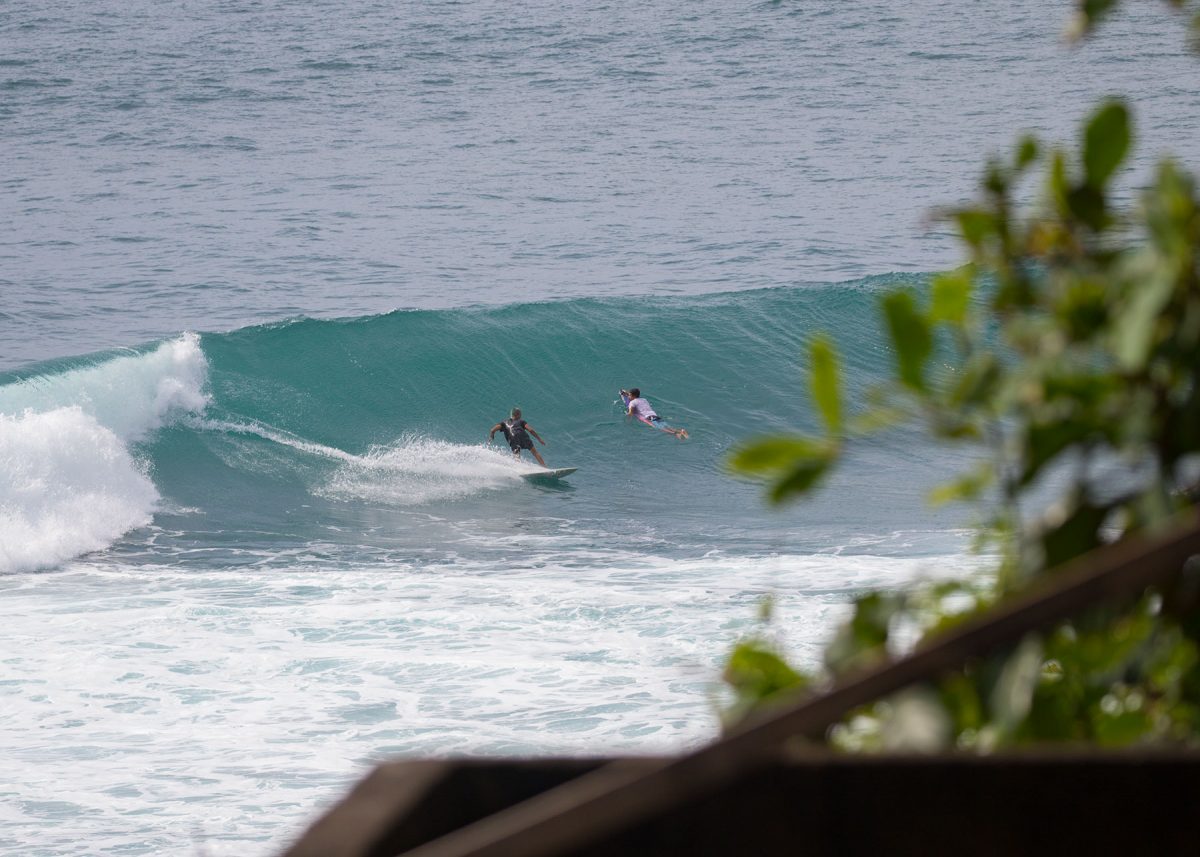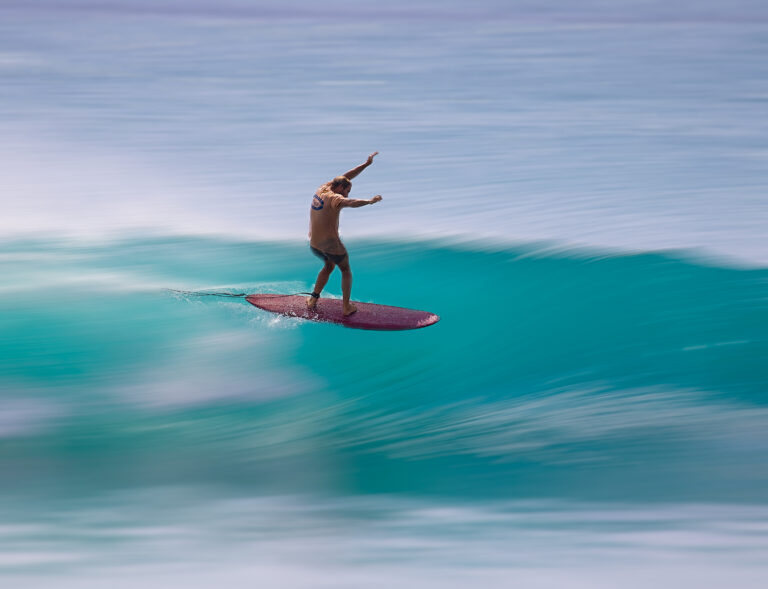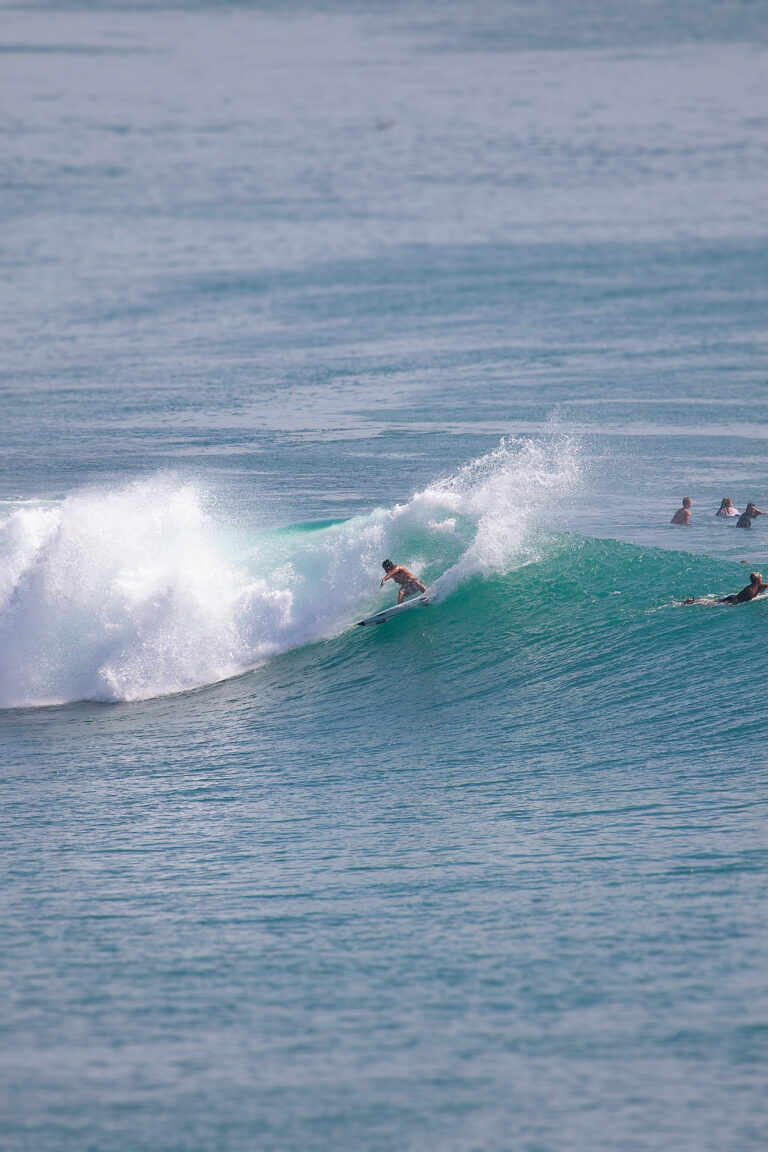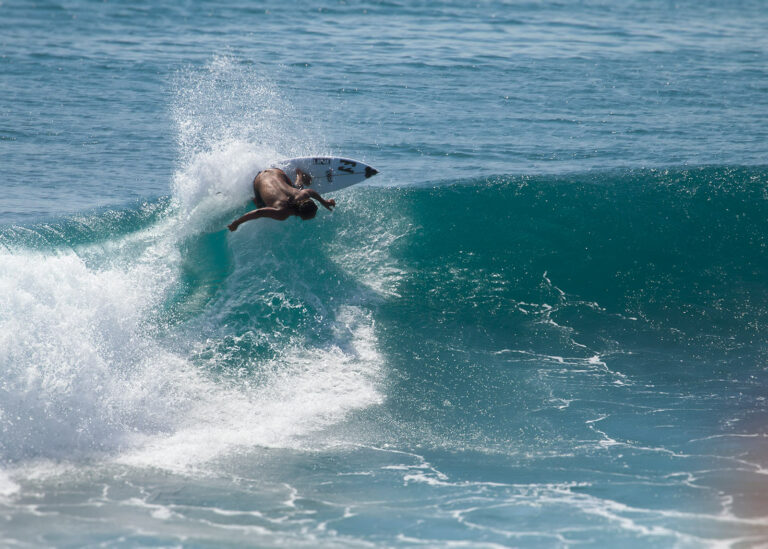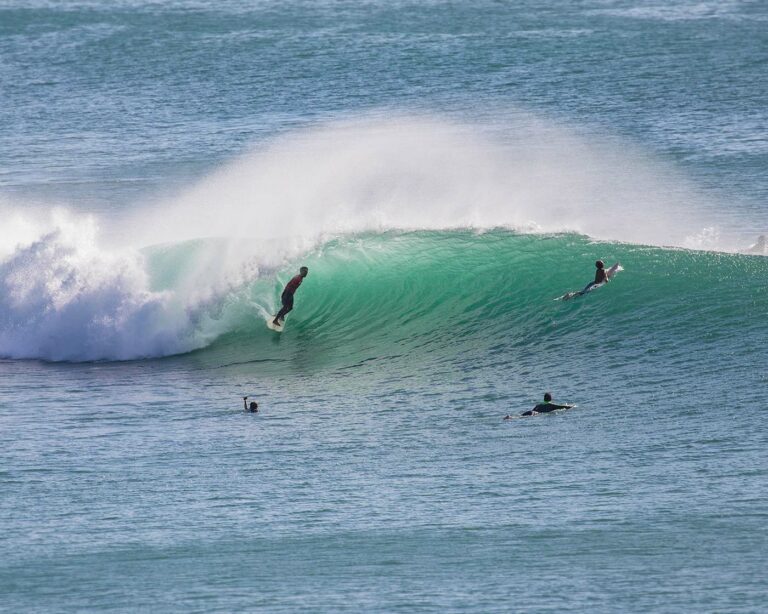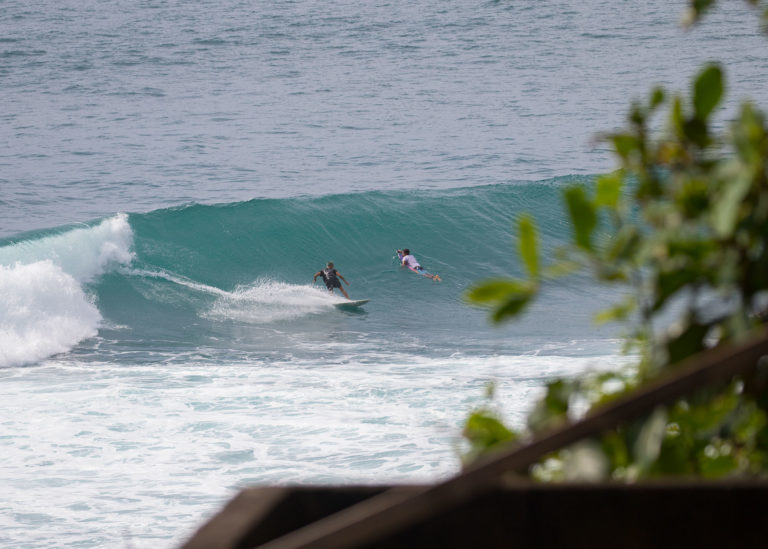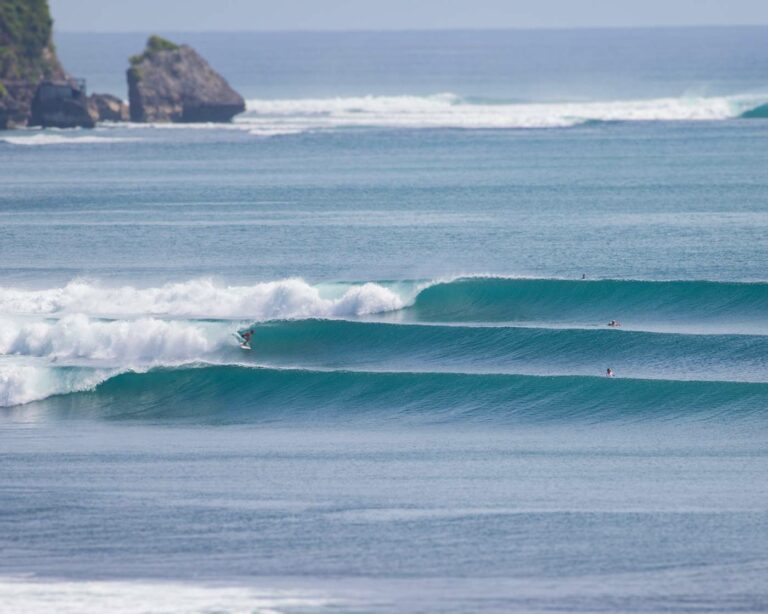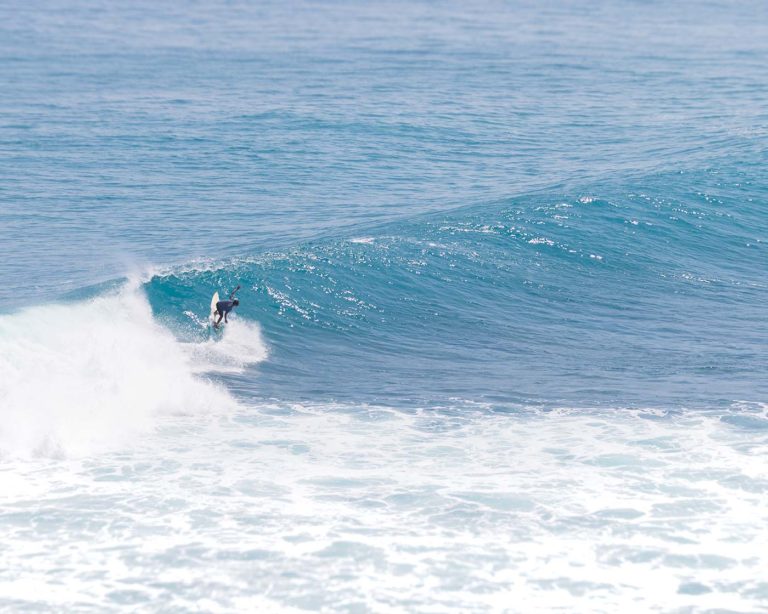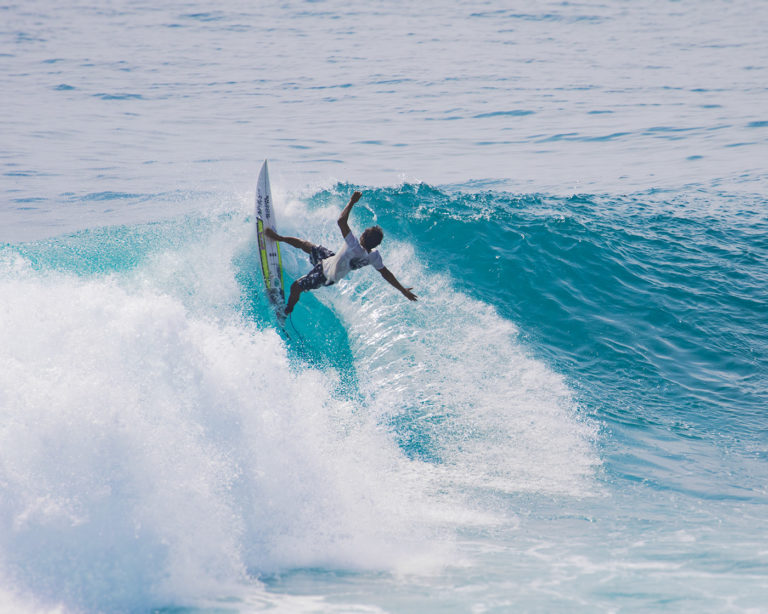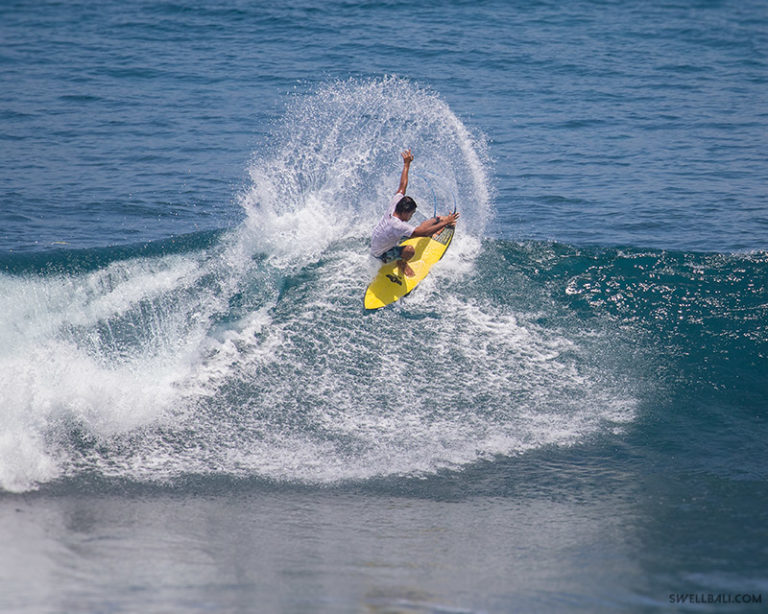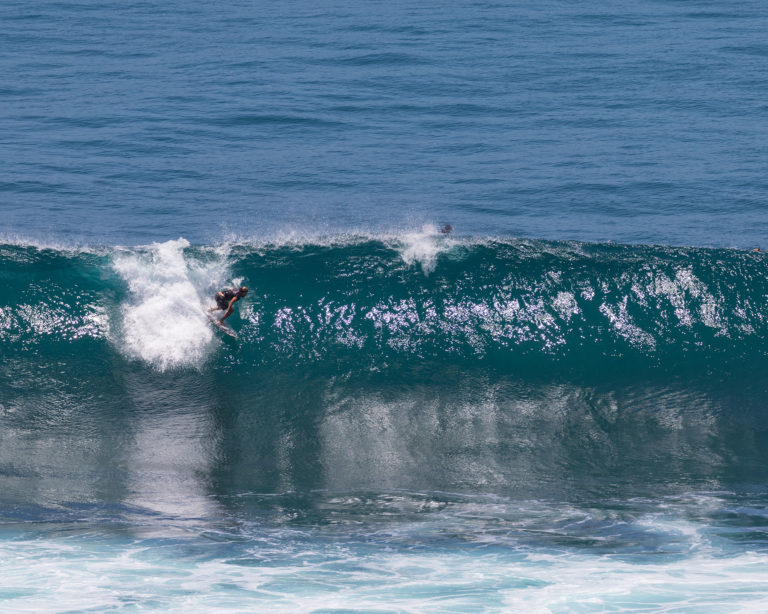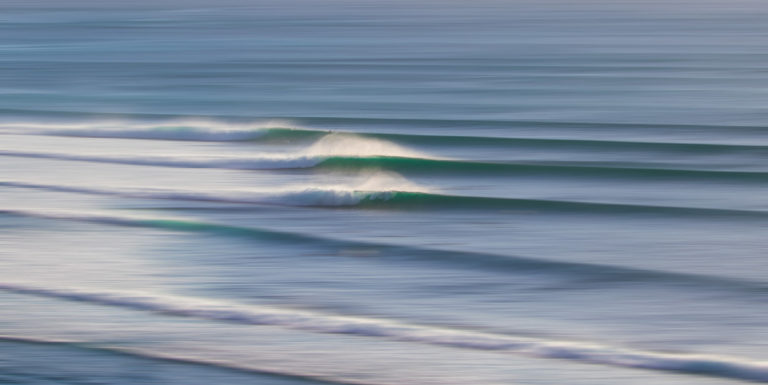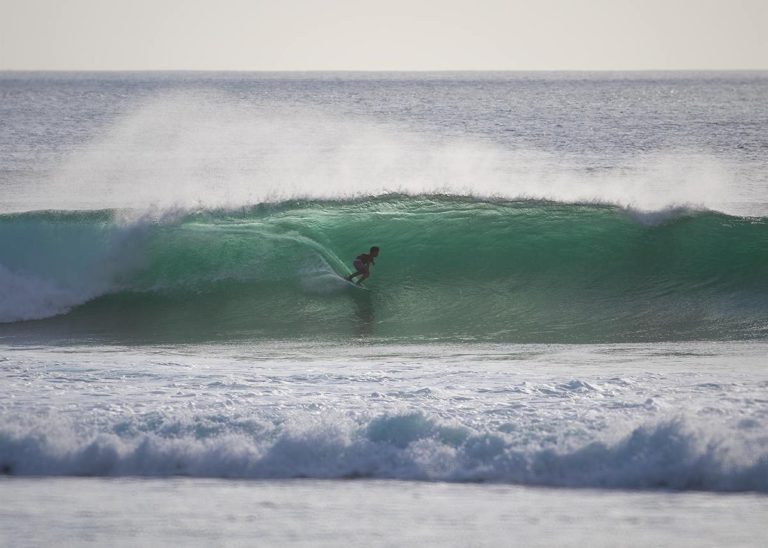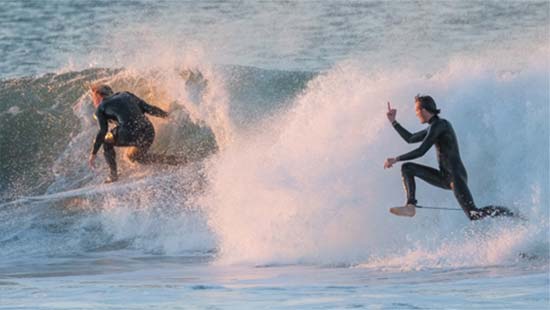
SURFING ETIQUETTE: THE RULES
(Or what to do and what not to do)
When you decide to learn to surf, you are not only beginning a new sport. The nature of surfing is not only about the physical activity of catching waves, it’s a culture, a lifestyle and for most of us surfers, it’s an obsession.
As surfing becomes ever more popular, surf breaks become busier and therefore, the ‘etiquette’ of surfing more important still.
Knowing about surf etiquette and how it works will keep you safe, prevent you from being involved in a “surf rage” incident and will almost certainly prevent you from suffering a serious surf injury.
At Swell Bali, we feel some responsibility for helping you become a surfer and adding to the line-up.
For us, it’s vital that you learn not only the skills of paddling and catching waves, but that you know how to take your turn in the water and not become a pest whilst you are a kook.
In order to maximize your fun, minimize the risks to yourself and others, and make good progress on your surf holiday, you must familiarize yourself with:
The 10 Golden Rules of Surf Etiquette.
1. KNOW YOUR ABILITIES
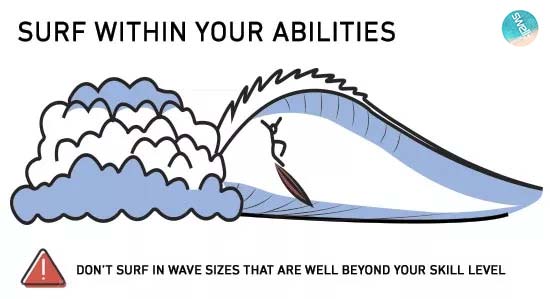 Even if it doesn’t come naturally to you, be humble. The ocean is a dangerous place if you are in the wrong spot. Waves carry immense power and are capable of doing you serious injury, or worse. If you are a beginner or novice surfer and you paddle out to an advanced break, whether that’s a shallow reef or any break on an ‘overhead’ day, you are at serious risk of injuring yourself and/or endangering those around you.
Even if it doesn’t come naturally to you, be humble. The ocean is a dangerous place if you are in the wrong spot. Waves carry immense power and are capable of doing you serious injury, or worse. If you are a beginner or novice surfer and you paddle out to an advanced break, whether that’s a shallow reef or any break on an ‘overhead’ day, you are at serious risk of injuring yourself and/or endangering those around you.
Surfing waves that are within your ability, will mean that you can progress gradually through the sizes of waves and you will eventually be able to surf those more advanced breaks. When you learn to surf at Swell Bali or take surf guiding with us, your lessons will always be taught at breaks that reflect your ability and your surf guide will make sure that he or she is taking you to a spot where you can enjoy your surf session without being intimidated.
The first thing to do, before you even set out to the beach in your local area is to check the surf forecast. Magicseaweed, Surf-Forecast and Surfline are three of the best surf forecasting websites and we use them every single day. Get to know what a forecast actually means in terms of wave height: Waves are forecasted mostly in ft. but how does that actually look when it’s a real-life wave?. The height of a wave might be listed as 3 to 4ft; sounds small doesn’t it? Well, actually it’s not so small as waves are ‘measured’ from behind, so that metre on the back can actually be a take off or drop which is well overhead.
As a relatively new surfer myself, I look for waves in the 2 to 3ft range here in Bali as I have learned this usually means a head-high takeoff.
Check the tides; most breaks are not suitable for beginner or novice surfers on a low tide (lower the tide, more chance of hitting the bottom). It’s not always the case though, so above all get to know what your local break does on a variety of tide heights. Some breaks have very little tide variation and others can have a huge tide surge, especially around new or full moon. Tides also affect how a wave breaks. For example, our local break Bingin, can be a brutally fast, barrelling left-hander on a low tide where only the very best surfers can make it through the sections, yet on a higher tide, it becomes a sweet and mellow wave suitable for beginners and intermediate surfers.
To avoid being ‘kook of the day’ the very best thing you can do when arriving at the beach is to sit and observe the waves for a minimum of 15 minutes, especially as with larger swells, there can be significant gaps between ‘sets’. In Bali for example, it can go flat for 20 minutes or more between sets, so what might at one moment appear to be nice, easy conditions with little baby waves breaking which seem perfect for you, can in an instant turn into a monster set of waves well out of your comfort zone. Look at what the waves are doing; where are they breaking? where are people sitting? how big is the wave on the ‘drop’? (if you are a novice surfer and you see that a wave is well over the head of a surfer when he paddles into it and makes the drop, this wave is too big for you). Also, check if the people are going left or right when they paddle onto a wave; if you see everyone going left, then that is the ‘direction’ of a particular wave and you will also need to go left when you take off.
2. PADDLE OUT WITH CAUTION
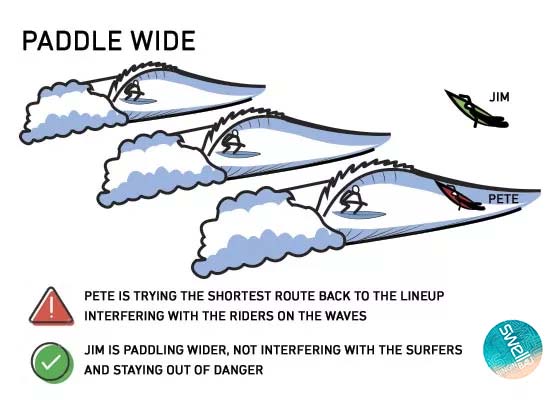 The most important thing to be aware of when paddling out is that the paddling surfer must always get out of the way of a surfer who is on the wave.
The most important thing to be aware of when paddling out is that the paddling surfer must always get out of the way of a surfer who is on the wave.
The surfer always has priority!
Check where others are paddling out; are they paddling ‘wide’ of the surfers who are riding? If they are, then they are taking the correct line. We see many people taking a ‘short-cut’ back to the line-up, meaning that they are directly in the way of a surfer who is already on a wave riding. It’s wrong, don’t do it.
In the picture here, Pete is taking the short cut. He might be able to get back into position quicker, but he is getting into the way of the surfer on the wave. Imagine if you were that surfer riding the wave, you would have to come off the face of the wave to avoid running into Pete.
Be like Jim; paddle around and wide to keep yourself and other surfers safe.
CAUGHT INSIDE?
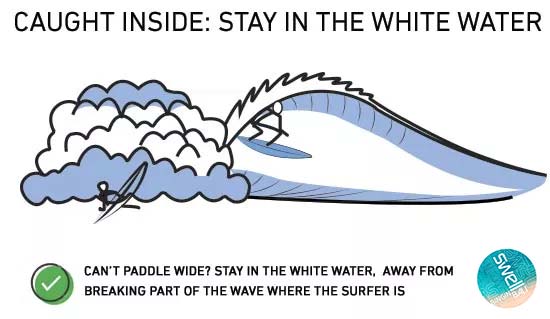 If paddling wide is not an option, then head for the white water part of the wave (in the diagram, on the left where the wave has already broken).
If paddling wide is not an option, then head for the white water part of the wave (in the diagram, on the left where the wave has already broken).
3. BE POLITE & SMILE
Regardless of whether you are paddling to a lineup with only 5 people you know already, or one with 50 strangers, the rules are the same. Be polite, smile, and say hello. It will bring a feeling of levity to everyone around and it will likely put you in the good graces of local surfers. We have a saying, ‘Kill them with kindness. It will usually get you more waves.
4. UNDERSTAND PRIORITY
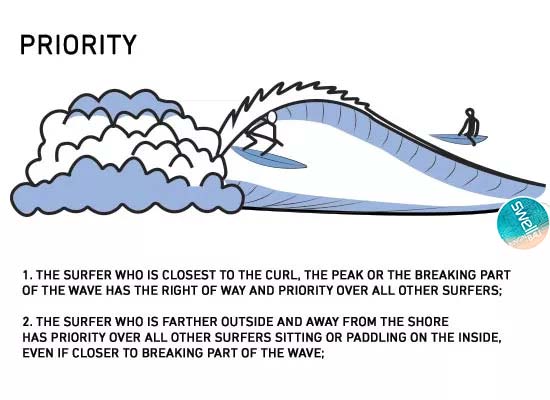 Even though you are not in a WSL heat, priority exists at every surf break. As a general guide, a surfer who is sitting closest to the ‘peak’ of the wave will have priority over the surfer who is furthest from the peak (or on the shoulder). If you did the 15 minutes of observing on the beach, you should already have noted where the peak and the shoulder are. Understanding priority is essential to keeping harmony in a lineup.
Even though you are not in a WSL heat, priority exists at every surf break. As a general guide, a surfer who is sitting closest to the ‘peak’ of the wave will have priority over the surfer who is furthest from the peak (or on the shoulder). If you did the 15 minutes of observing on the beach, you should already have noted where the peak and the shoulder are. Understanding priority is essential to keeping harmony in a lineup.
- The surfer who is closest to the curl, the peak, or the breaking section of the wave has the right of way and priority over all other surfers;
- The surfer who is farther outside and away from the shore has priority over all other surfers sitting or paddling on the inside, even if they closer to breaking part of the wave; (This rule is often ‘abused’ by stand up paddleboarders (SUP), since they can pick the waves up further outside than regular surfers, if they get too greedy catching all the set waves, the Paddleboarder can expect the stink eye or aggro vibes from the rest of the line up). Sooner or later, people will start to ‘drop-in’ on anyone being greedy.
- Do NOT ever paddle out and go and sit ‘in priority’ I.e. if you are on a left-handed surf break and you can see a group of surfers sitting around the peak, never paddle out and sit on the left-hand side (as viewed from the shore). This is the fastest way to get the pack angry with you. It’s rude, it’s wrong and it’s not your turn when you just paddle out. Instead, paddle to the right and sit at the ‘end’ of the line. As each set wave comes through, your turn gets closer. Sadly, this appears to be rather a lost art these days.
5. DON’T DROP-IN ON OTHER SURFERS
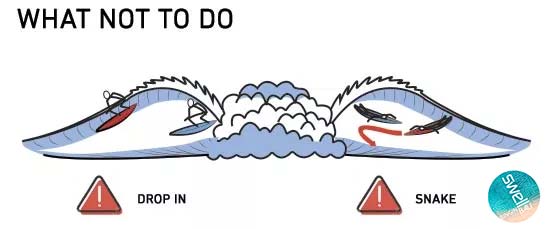 This may seem obvious but it still happens often. A drop-in is when a surfer is already on the wave, riding down the line when all of the sudden, another surfer appears on the wave.
This may seem obvious but it still happens often. A drop-in is when a surfer is already on the wave, riding down the line when all of the sudden, another surfer appears on the wave.
Dropping-in on other surfers is a fast-track to aggro in the water. Luckily, it’s easily avoided and starts with understanding priority. If we take that left-hand wave example, if a surfer to your right (when facing the beach) is paddling for the wave, you shouldn’t even try to paddle for it as it will be a drop-in. If it were a right-handed wave, and you were furthest on the left (when facing the beach) you would have priority and a surfer paddling to your right would be dropping in on you.
Awareness is crucial. Many novice surfers will be so busy concentrating on the fast-approaching wave with adrenaline pumping, that they completely forget to check no one is on it already. Always check before going!
You lose your priority if you paddle for a wave and miss it; that’s your turn gone, suck it up and get back in line (and paddle harder next time 😉
Being a snake – ‘snaking’
Being a snake (pretending to sit in line and then suddenly paddling around the back of the surfer in priority to get into ‘priority’), dropping in on others, jockeying for position in the lineup, taking a wave and then paddling straight back to priority, all of these are unacceptable and in many surf locations may end up in aggravation from other surfers, quite rightly. You might be tolerated once but it’s common to be ordered out of the water by a local in Bali if you are considered to be disrespecting others in the water.
Communicate
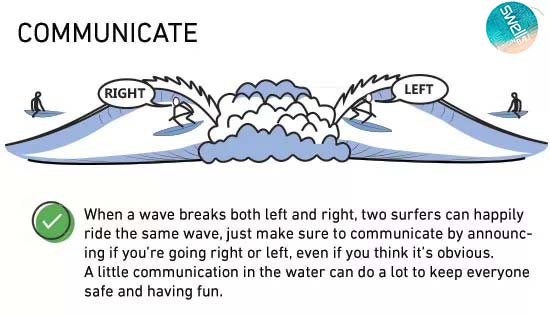 When a wave breaks both left and right, two surfers can happily ride the same wave, just make sure to communicate by announcing if you’re going right or left, even if you think it’s obvious. A little communication in the water can do a lot to keep everyone safe and having fun.
When a wave breaks both left and right, two surfers can happily ride the same wave, just make sure to communicate by announcing if you’re going right or left, even if you think it’s obvious. A little communication in the water can do a lot to keep everyone safe and having fun.
Share
Just because you can catch every wave, doesn’t mean you should.
If you’re on a larger foam board or longboard that catches waves easily, it doesn’t mean you always get to take the wave from the short boarder next to you who is looking to practice his or her turns and airs. The ocean is for everyone, so act accordingly. Being gracious and generous in the water usually results in a happier session and a rise in your own popularity which will stand you in good stead for your future sessions. People have long memories.
SUP users are especially guilty of using their bigger boards and paddles to get more waves. Being a wave hog will not be tolerated on most Bali surf breaks.
6. BE CONSCIOUS OF YOUR EQUIPMENT
Most surf injuries are as a direct result of surfboard collisions rather than the seafloor, other surfers, or wildlife. Surfboards are rock solid and have very sharp fins which can do some serious damage.
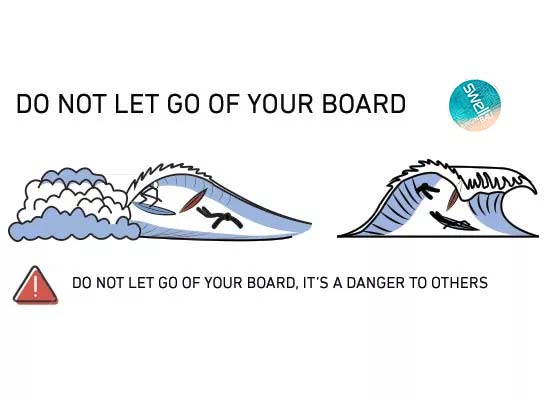 To keep yourself and other surfers safe, don’t ‘bail’ your surfboard (letting it go). Usually, your surfboard + your leash + your body length will mean that your surfboard will ‘fly’ 6 to 8 meters further than your head when you bail it. In a crowded surf area, it’s inevitable that if you don’t hang on to your surfboard after you fall or when you are paddling back out through a set, your surfboard will hurt someone. Don’t ever let go of your board when there are other surfers around you. There are virtually no situations in surfing where you should bail your board.
To keep yourself and other surfers safe, don’t ‘bail’ your surfboard (letting it go). Usually, your surfboard + your leash + your body length will mean that your surfboard will ‘fly’ 6 to 8 meters further than your head when you bail it. In a crowded surf area, it’s inevitable that if you don’t hang on to your surfboard after you fall or when you are paddling back out through a set, your surfboard will hurt someone. Don’t ever let go of your board when there are other surfers around you. There are virtually no situations in surfing where you should bail your board.
Learn how to turtle roll and duck-dive to get through sets. If your board is near you, under you or you have a tight grip on the leash, it won’t hurt you or any other surfer in the water.
7. KNOW THE BREAK
We’ve already covered this under knowing your abilities in section 1, but this is such a crucial step for surfers of any level it’s worth repeating. If you’re about to surf at a new break, take a while to watch the waves. Notice where they are breaking, where the ‘channels’ are (that’s often a section where the rip is too where the waves don’t break and the water moves back out to sea).
Never be afraid to ask another surfer’s advice; all but the grumpiest will be willing to give you the benefit of their expertise. The chances are, they will be more than helpful and tell you where to paddle out, where the peaks are, and more tips.
This is the biggest advantage of going out with a guide if you are unfamiliar with a spot: Even if you are already a good surfer, paddling out with someone who knows a spot like the back of their hand will always, without exception, get you into the right position and get you more waves.
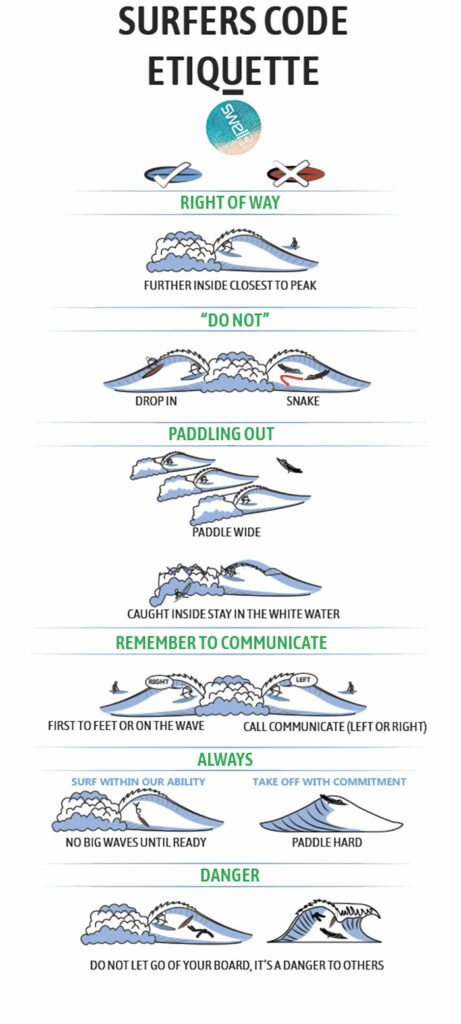
8. RESPECT THE BREAK & BEACH
This one is so obvious but given the littering we still see, needs repeating. Be part of the solution, not the pollution. Don’t leave anything on the beach that is not bio-degradable. You can even take it a step further and pick up any litter you might encounter. We love our local surf beach, and we do everything we can to keep it beautiful with regular beach cleanups that all the locals are involved in.
9. APOLOGIZE IF YOU MESS UP
We get it, accidents happen. You messed up, and that’s okay as long as you say sorry like you mean it. No one is going to stay mad at you if you acknowledge a mistake.
10. DON’T SHOW UP IN A LARGE GROUP AT A NEW BEACH
Empty line ups with good wave are hard to find, when you do find a line up with only a few people surfing it, don’t ruin their fun by showing up with 10 friends and take over the line up. Spread over different peaks, so everyone can enjoy catching some good waves.
11. FORGIVE AND FORGET IT
Finally, if someone else in the water wrongs you, if they drop in on you or send a board flying at you, try to treat them as you would like to be treated after your mistake. Being angry when surfing will always ruin your session and no one else wants to be surfing around a bitter person.
TIPS FROM LAIRD HAMILTON
Be Aware. Laird Hamilton recalls, “I got run over by a guy when I was sixteen and he broke my leg. A guy ran me over with a giant longboard, and it compounded my leg, and that was one of those things that you learn, like, ’Don’t trust that the guy sees you and that they’re going to avoid you.’ Just remember that they’re probably going to run you over if you don’t watch where you’re going.”
Be Decisive. “I think the biggest mistake any beginner makes is hesitation,” says Laird. “You need to be deliberate with your actions, and if you’re going to paddle out of the way, just paddle and keep paddling. I think a really common mistake is people being indecisive in their movements, whether it’s trying to catch the wave or get out of the way.”
The above surf etiquette rules apply to all our local surf spots. There are also several spots where SUP’s are not allowed (Bingin, Ulluwatu to name just two)
If you are on an SUP, find more open spaces up and down the coast. This also applies to the new sport of foiling; it’s just too dangerous to other surfers at our local surf spot.
Respect the locals wherever you are. Disrespecting local surfers will usually result in you being ordered out of the water. You are always a guest in another surfer’s country or area.
Surfing is more than just a sport, it’s ingrained in us from the moment we catch our first wave. In order to keep your surfing stoke alive, stay safe in the water, share it gracefully with others and always keep the 10 Golden Rules of Surf Etiquette close to your heart.
Perhaps others won’t always behave themselves in the same way, but we’ve seen many ‘hungry’ surfers change their attitude for the good when we lead by example.
Surfing is beautiful, let’s keep it that way.
